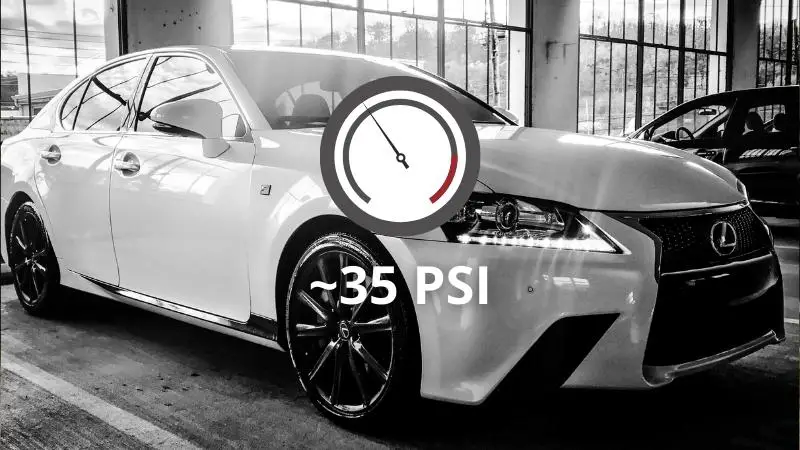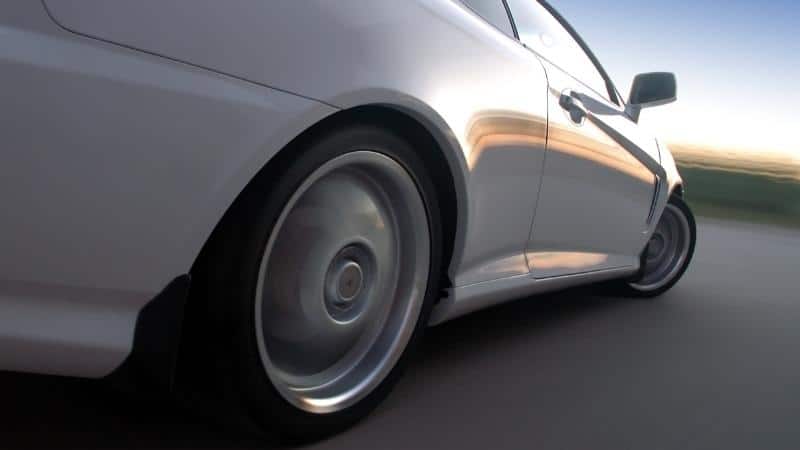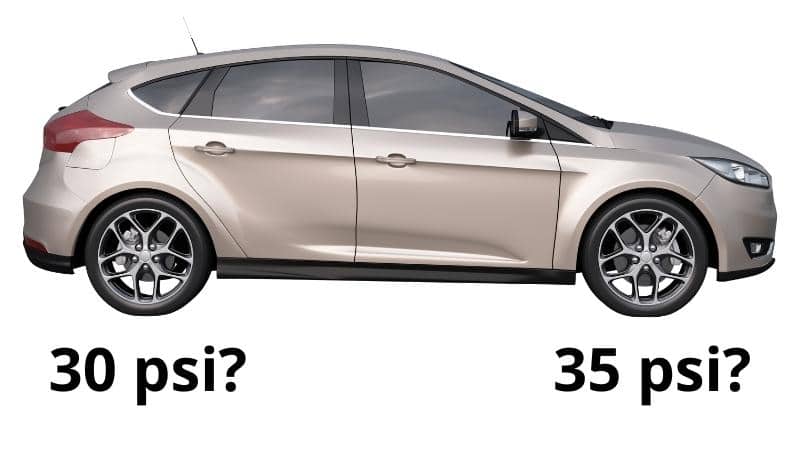There are many factors to consider when buying a car, performance being one of them. Automakers, therefore, pay attention to every detail, from the engine, body, and transmission.
One key area that manufacturers and drivers must focus on is the car’s tire pressure. Weight distribution is crucial for speed, handling, and carrying capacity. This, therefore, means that there must be specific psi specifications for these cars.
Some cars have equal front and rear tire pressure, while others recommend more tire pressure on either the front or rear wheels. Whether the tire pressure should be equal or different for the wheels depends on how the car is built, which tires that are used, and on the car manufacturer.
These considerations can be confusing, especially if the car owner cannot tell the difference without professional help.
Therefore, you must understand whether front and rear tire pressure should be the same. This will help you set your tires for optimum performance, better handling, and excellent fuel economy without degrading the wheels.
Why Front And Rear Tire Pressure May Differ Between Cars
Higher air pressure in the front tires tends to be more common than in the rear tires in most vehicles. This is to compensate for the additional weight of the transmission and engine. This is common for front-wheel-drive cars.
Some cars, including BMW, specify low pressure for the front wheel and higher pressures for the rear wheels. Rear-wheel-drive cars have less weight on the front, though some are built with a 50:50 weight distribution for both ends.
Therefore, two main things may determine the tire pressure for these cars.
1. Load
Vehicles are specifically built to carry people and goods. The ones that specify more air pressure in the back are designed for a higher carrying capacity.
The weight distribution on the rear could be more than the front weight.
2. Handling
The performance of racing cars is usually determined by the air pressure in the tires. You will notice that the tire pressure determines the vehicle’s handling, and the same goes for streetcars and passenger cars.
In some instances, the automobile manufacturers will specify lower psi for the rear tire by 2-5 psi. Less air pressure in the rear wheels provides good gas mileage while maintaining proper handling as the manufacturer intended.
Why Most Cars Have Equal Front And Rear Tire Pressure

Every carmaker is different, and each knows how to select the best performance parameters for their cars. While the debate of having different tire pressures for the front and rear wheels is still ongoing, some have realized that working with equal tire pressure delivers results.
Equal air pressure implies that the car will run on equivalent tire sizes, ensuring optimum traction. Such vehicles are safer because drivers are not subjected to oversteering and understeering. There is also minimum tread wear and improved gas mileage.
When driving at higher speeds, equal tire pressure assists in achieving on-time braking and cornering. Unlike rear wheels with the extra pressure that rotates faster, these feel well balanced.
Generally, similar front and rear tire pressure are designed for an average load. The moment you add extra weight on the back, there will be unequal weight distribution which is dangerous for vehicle handling, the axle, and the tires.
Why do Some Cars Have Higher Tire Pressure in The Front Wheels?
Having higher air pressure in the front tires is determined by the weight and handling of the car. Most vehicles, including passenger cars, pickup trucks, and minivans, carry more weight on the front than the back before loading because of the engine sizes.
The front tire also commands more handling because it initiates turns which exerts additional pressure on the wheels. More tire pressure on the front wheels also improves oversteering – the car turns more when you rotate the steering wheel.
The rear tires will respond with excessive skidding, which increases the car’s angle of response with the road. Oversteering is positive feedback, and if not well executed, it could lead to spinout, blowouts, and fishtailing. It maximizes force on all the tires, especially on a dry road.
Most auto manufacturers recommend more air pressure on the front for increased oversteering. This is considered safe because it minimizes accidents on the road. Generally, this results in better handling of the car, especially when cornering and braking.
What Happens to a Car When Rear Tires Have Higher Air Pressure?
Even though pickup trucks have more engine weight on the front, most manufacturers recommend higher pressures on the rear to handle the extra load weight. Besides taking the additional weight, additional rear tire pressure also improves understeering.
Most cars are close to achieving even weight distribution for the engine and transmissions. The rear tires tend to accelerate under additional load. This also helps the vehicle turn quicker than at a 50/50 tire pressure ratio.
Does The Tire Pressure Difference Affect Performance?

It is doubtful that the amount of air pressure you put in your tires will affect the vehicle’s performance. You can only experience problems if you do not follow the psi specifications for the specific wheels. If you have a front-wheel-drive car, you understand that more weight is exerted on the front when accelerating.
When the air pressure on the front axle wheels is lowered by 2 psi, it could affect the handling due to poor weight distribution. This also happens when air pressure increases at the back than the front of a front-wheel-drive car. It tends to understeer, and you might have challenges driving on curvy roads or instant braking. The vehicle will not operate as designed by the manufacturer.
Conclusion
For every curious car enthusiast or owner, this post should be enough to answer all the questions you have about front and rear tire pressure differences.
While the front and rear tires may not require the the same air pressure for some cars, drivers should ensure that they fill the correct psi for their tires as specified by the manufacturer. If there are any adjustments to be made, always seek professional advice.
Hi, my name is Niklas, the head content creator & CEO of Whirling Wheelz. I am very interested in vehicles of all kinds, mainly cars. I have a car mechanics degree from high school and a big hobby of mine is to follow the WRC (World Rally Championship) both online and through travel.


